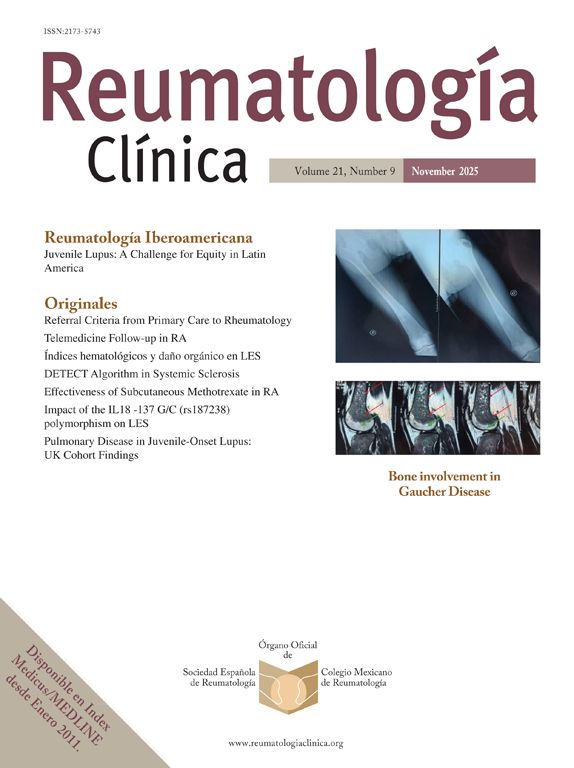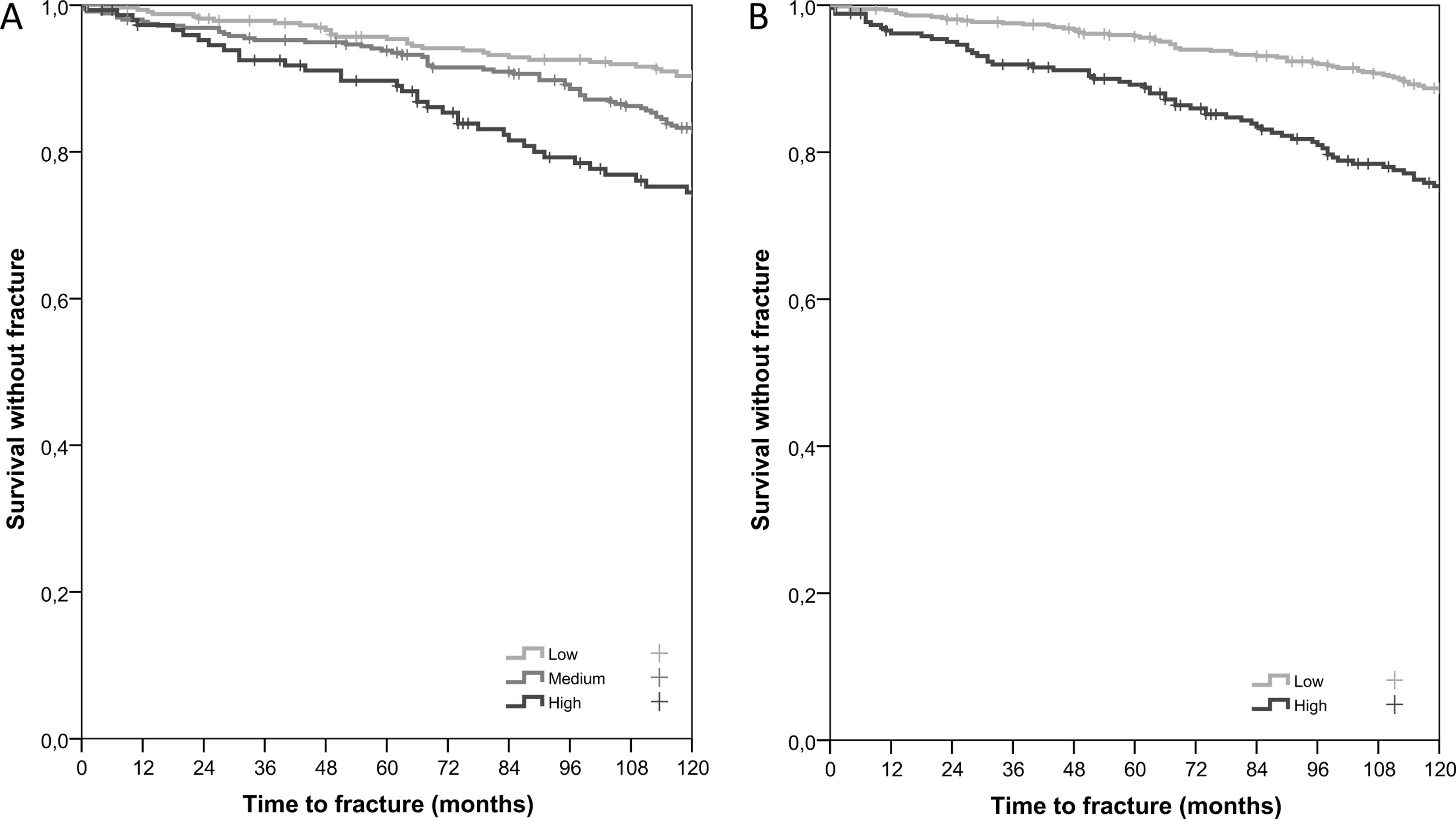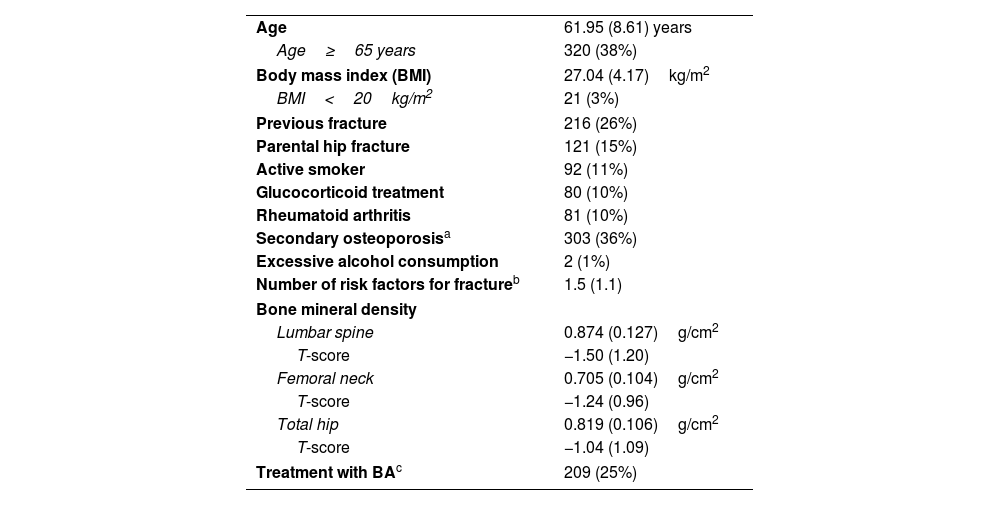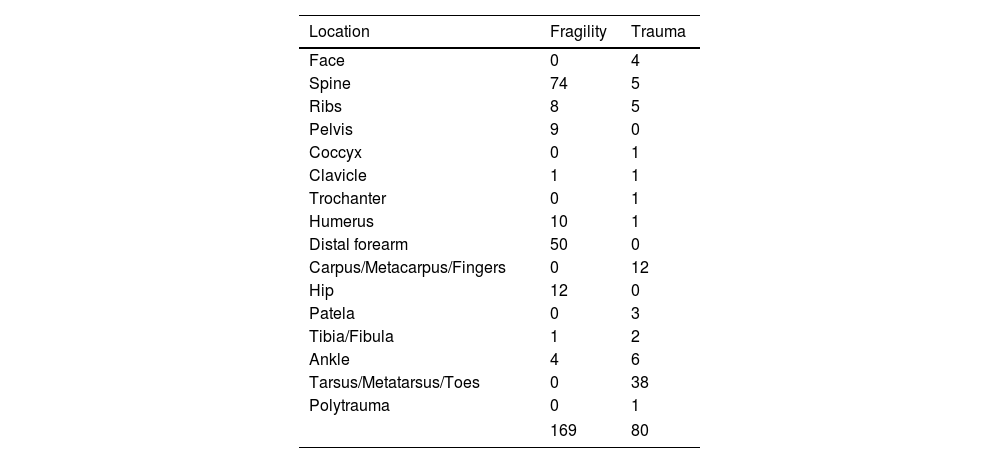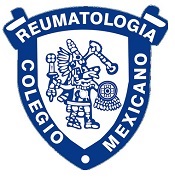Osteoporotic fractures represent a significant clinical and public health burden. Although FRAX is widely used to estimate 10-year fracture risk, its Spanish version underestimates the probability of major osteoporotic fractures (MOF). This study assessed the performance of a modified FRAX-based algorithm, calibrated for the Spanish population, to stratify postmenopausal women into clinically meaningful risk categories.
MethodsWe retrospectively followed 837 women (mean age 62±9 years in 2008) referred for bone densitometry. All MOF over a 10-year period were recorded. Women were initially categorized as low risk (MOFR<3.5%) or high risk (≥10%). Those with MOFR between 3.5% and 10% were reclassified as high risk if they had osteoporosis or if the recalculated MOFR including BMD was ≥7%.
ResultsA total of 124 women experienced a MOF (66 vertebral, 39 distal forearm, 10 hip, 9 humerus). Initial risk classification identified 40% of women as low risk (fracture incidence: 9.4%, 95% CI: 6.2–12.5), 42% as intermediate (16.3%, 95% CI: 12.4–20.1), and 18% as high risk (23.5%, 95% CI: 16.7–30.3). After reclassification, 69% were considered low risk (11.0%, 95% CI: 8.4–13.5) and 31% high risk (23.2%, 95% CI: 18.1–28.3).
ConclusionsThe proposed FRAX-based algorithm improves fracture risk classification in Spanish women and supports more rational use of bone densitometry and therapeutic interventions.
Las fracturas osteoporóticas representan una carga significativa tanto clínica como de salud pública. Aunque FRAX se utiliza ampliamente para estimar el riesgo de fractura a 10 años, su versión española infraestima la probabilidad de fracturas osteoporóticas mayores (FOM). Este estudio evaluó el rendimiento de un algoritmo modificado basado en FRAX, calibrado para la población española, para estratificar a las mujeres posmenopáusicas en categorías de riesgo clínicamente relevantes.
MétodosSe siguió de forma retrospectiva a 837 mujeres (edad media: 62±9 años en 2008) remitidas para densitometría ósea. Se registraron todas las FOM durante un periodo de 10 años. Inicialmente, las mujeres se clasificaron como de bajo riesgo (RFOM<3,5%) o alto riesgo (≥10%). Aquellas con un RFOM entre el 3,5 y el 10% fueron reclasificadas como de alto riesgo si presentaban osteoporosis o si el RFOM recalculado incluyendo la densidad mineral ósea era ≥7%.
ResultadosUn total de 124 mujeres presentaron alguna FOM (66 vertebrales, 39 de antebrazo distal, 10 de cadera y 9 de húmero). La clasificación inicial identificó al 40% de las mujeres como de bajo riesgo (incidencia de fractura: 9,4%; IC 95%: 6,2-12,5), al 42% como riesgo intermedio (16,3%; IC 95%: 12,4-20,1) y al 18% como de alto riesgo (23,5%; IC 95%: 16,7-30,3). Tras la reclasificación, el 69% se consideró de bajo riesgo (11,0%; IC 95%: 8,4-13,5) y el 31% de alto riesgo (23,2%; IC 95%: 18,1-28,3).
ConclusionesEl algoritmo propuesto, basado en FRAX y ajustado para la población española, optimiza la clasificación del riesgo de fractura en las mujeres españolas, y permite un uso más racional de la densitometría ósea y de las intervenciones terapéuticas.

